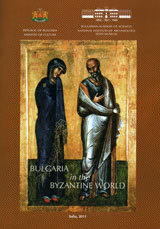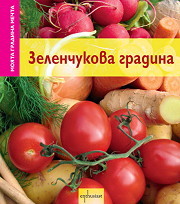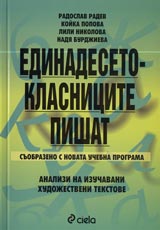- Американска и канадска художествена литература
- Антикварни книги
- Антични автори
- Балканска художествена литература
- Библиофилски издания
- Биология
- Българска художествена литература
- География, пътеводители
- Детска литература
- Европейска художествена литература
- Езикознание, лингвистика, семиотика, филология
- Езотерика, духовни учения
- Здравна и медицинска литература
- Земеделие и животновъдство
- Изкуство
- Икономическа литература
- История
- Календари, сувенири
- Компютърна литература
- Кулинарна литература
- Културология, етнология и фолклор
- Латиноамериканска художествена литература
- Литературна критика
- Литературна периодика
- Медии и комуникации
- Нобелова награда за литература
- Политология
- Правна литература
- Православна литература
- Психология
- Речници, справочници, енциклопедии
- Социология
- Спорт, хоби
- Точни науки, техника
- Учебна литература, Педагогика
- Философия
- Художествена литература от Азия, Африка и Австралия

Bulgaria in the Byzantine World
Продуктов номер: 26137Изчерпана
Автор: Колектив
Категория: Археология
Издателство: БАН национален археологически институт с музей
Състояние: Нова книга
ISBN: 9789549472103
48 страници
меки корици
Първо издание: първо издание, 2011 год.
Народност: българска
EXHIBITION 22-nd INTERNATIONAL CONGRESS OF BYZANTINE STUDIES
PREFACE
WHY BULGARIA WITHIN THE BYZANTINE WORLD? For this area of the European space in which the Bulgarians found their homeland, belonged for good and all to a cultural circle setting its profound mark on the fate and culture of all the nations that created states during the Middle Ages.
Bulgaria, established in the seventh century, was all an enemy, an ally, a rival, and a partner of the Eastern Empire we name Byzantium. The seats in the Balkans became the ground of its culture where the Antiquity proceeded to the Middle Ages. There the deep-rooted traditions preserved their triumphs to transform them into an integral part and wealth of the new .sovereigns of the territories of the Bulgarians.
Byzantium was the mightiest source of ideas, patterns, model examples and rivalry for the Bulgarians. Captivating its territory from the Empire, the newborn state became related with it, waged wars against it, clashed with it, adopted models in all the spheres of life or freed itself, fell under its impact still searching its friendship, or fought for supremacy. In the course of nearly two centuries (10th - 12th), it fell again within the state and political system of Byzantium as this circumstance enriched it still further on.
This quite complicated picture of the relations between Bulgaria and thousand of years old Empire, enriched by the spirits of its predecessors and the variegated ethno - cultural amalgamation of its heterogeneous population reflected on and can be illustrated by the material and artistic reaching.
Bulgaria belonged actively to the Medieval Christian world and shared its cultural values thanks again to its affiliation to the Byzantine circle. Thus, the territories of the future state of the Bulgarians have preserved till our day the trace of a large-scale development connected with the spread and recognition of the world religion. Temples and monasteries were set up even in the most secret recesses of the Byzantine Balkan provinces between 4th and 7th centuries. Today their ruins spring up from the soil, like St. Sophia in Serdica, the Old Metropolitan Church in Mesambria, the Red Church in Perushtitsa, or the basilica in Belovo, to let us appraise this soil as an artistic seat and integral part of the cultural commonwealth of Byzantium. The sculptural workshops on the Island of Prokonnesos in the Sea of Marmara worked for the decoration and furnishing of these elite edifices. The most exquisite pieces of work designed for the imperial constructions of the Capital city of Constantinople were employed as model examples. The light coming from the temple windows swept up the multi-colour mosaics on the floors and inspired life in scenes and images on the walls. The painted tombs in the necropolis of Serdica, the floor mosaic of St. Sophia Church, and the angels on the arches of the Red Church almost two hundred years later outline the course and the achievements of the artistic creation.
The artistic laboratory comprised the centers in these territories and thus created the culture of the Empire. Teams of architects and skillful man strayed far and wide to meet the requirements of various layers of the society. They employed to many replicas the models produced in the most prominent workextraordinary cross - reliquary decorated with images and scenes executed in niello technique. Still another value is the pectoral icon with the image of St. Virgin Mary.
The significance of all that the Bulgarian collections treasure lies in its origins and its location in territories still covered by Bulgaria as they offer good possibilities for interpretation. This refers to the numerous artifacts of every day standards as well as to the technological inventions or the huge amount of coins and seals.
The artistic heritage and the works associated with the religious practice - liturgical objects, embroideries and painted holy images add a peculiar prestige to this exhibition. Four icons present the assembly of the most remarkable works of the easel painting known from the collections of the Bulgarian museums - the ceramic icon of St. Theodore from Veliki Preslav (10th century) - the only one known of its kind, the outstanding mosaic icon of St. Virgin Mary from Thrace - a precious imperial gift (13th - 14th century), the icon of St. Virgin from Nessebar in silver facing donated by the uncle of the Bulgarian Tsar Ivan Alexander (1342), and the two - sided icon from Poganovo Monastery (14th century), incredible in its artistry. A gallery of painted images from the Church of St. Nicholas in Melnik, and wall paintings from churches and artifacts from the post-Byzantine Age shape the notion of this profound wealth and illustrate the eternal relationship between Bulgaria and Byzantium.
Here we may find the deep sense of the exhibition revealing the nature and the spirits of the Bulgarian Medieval culture.



